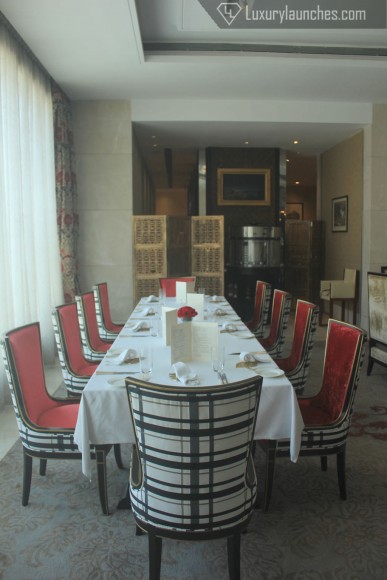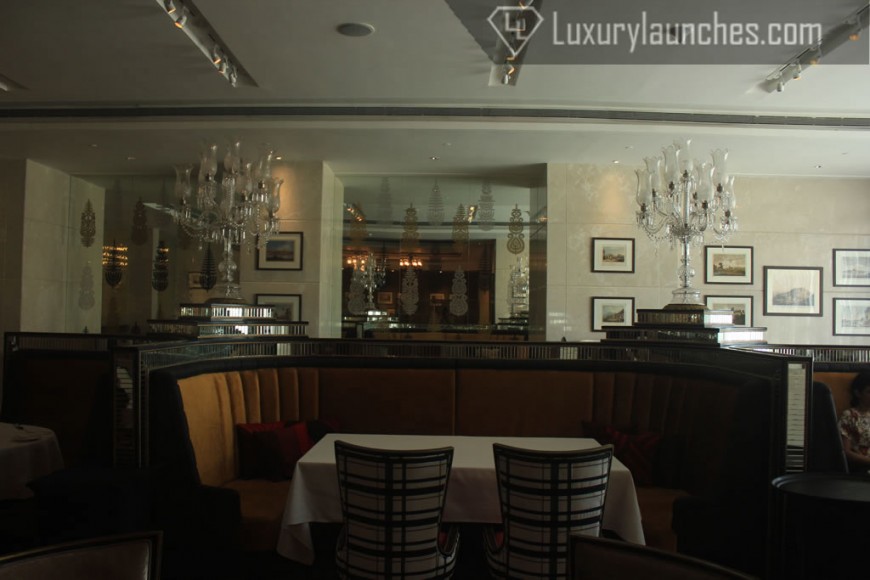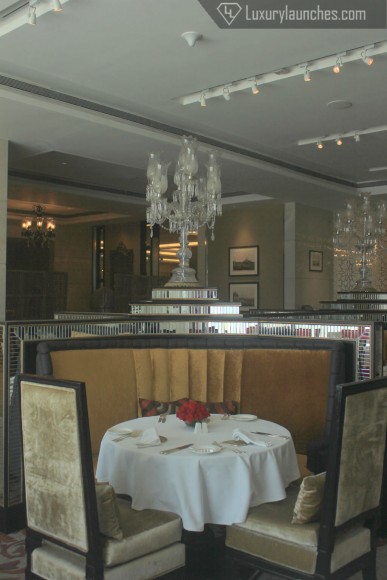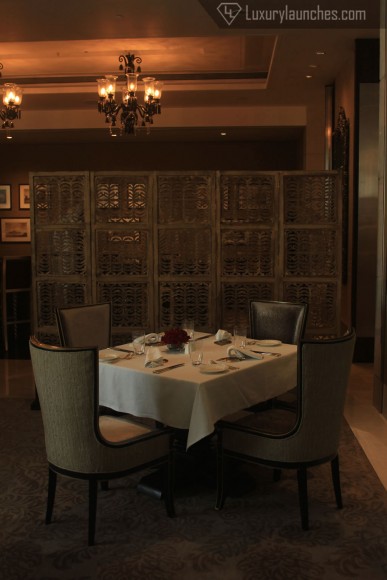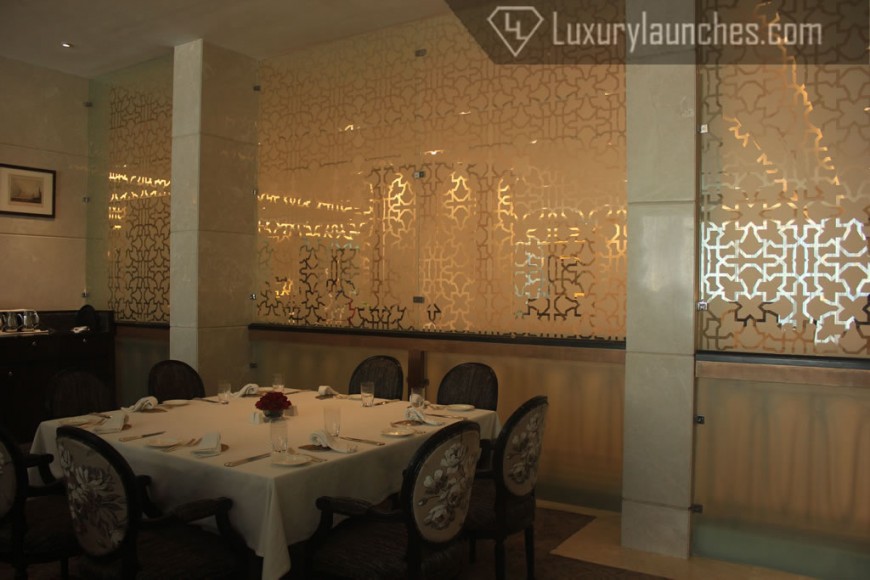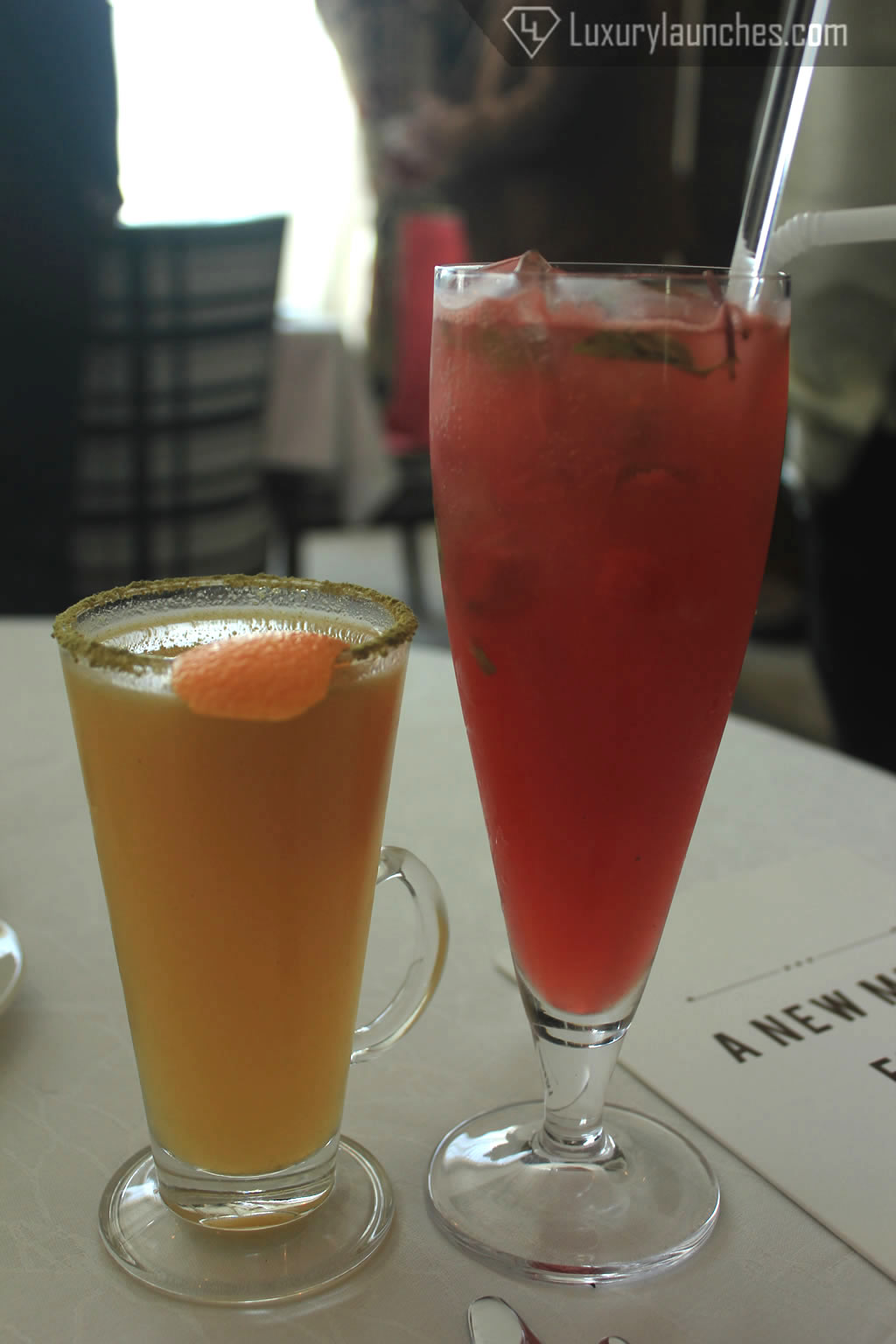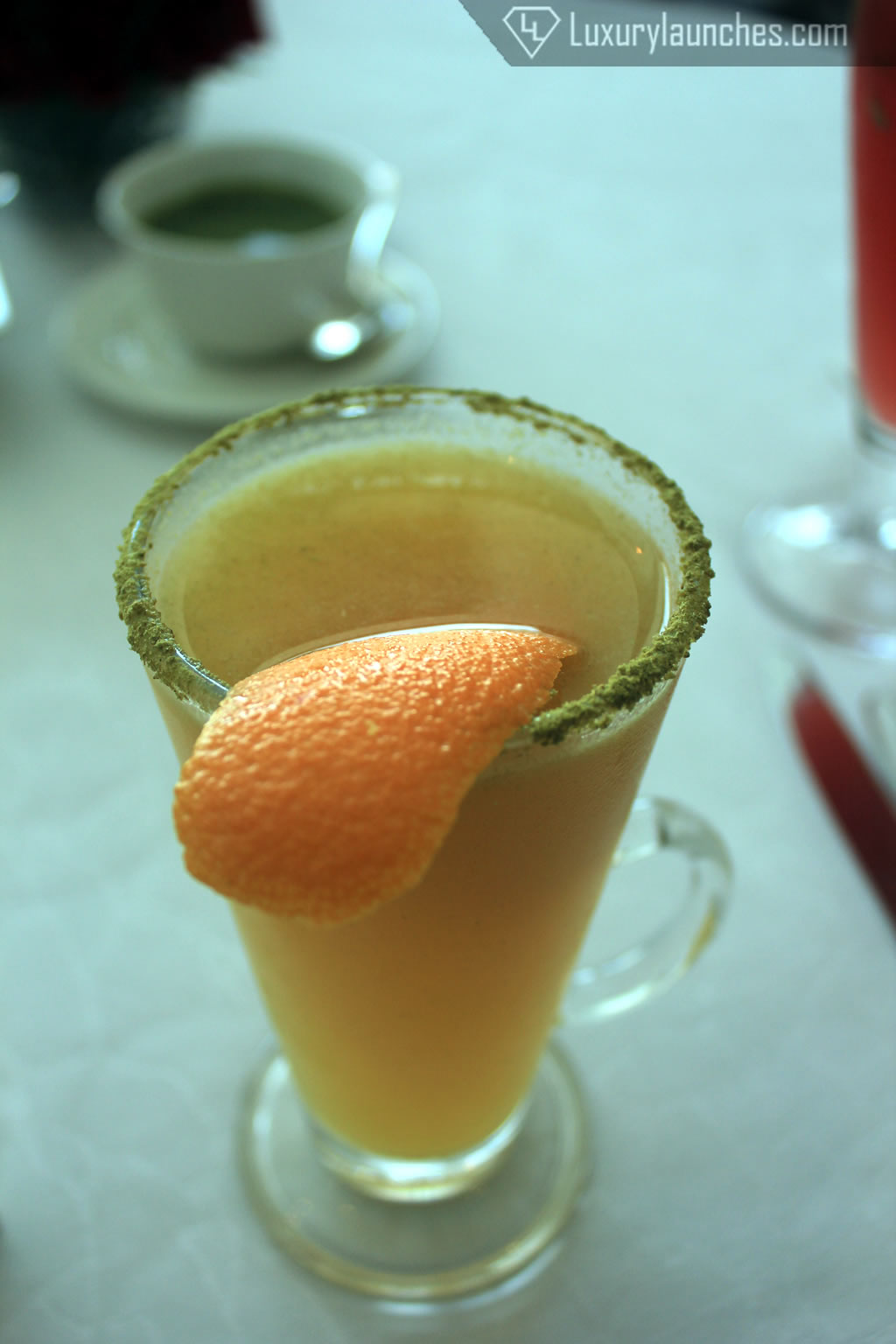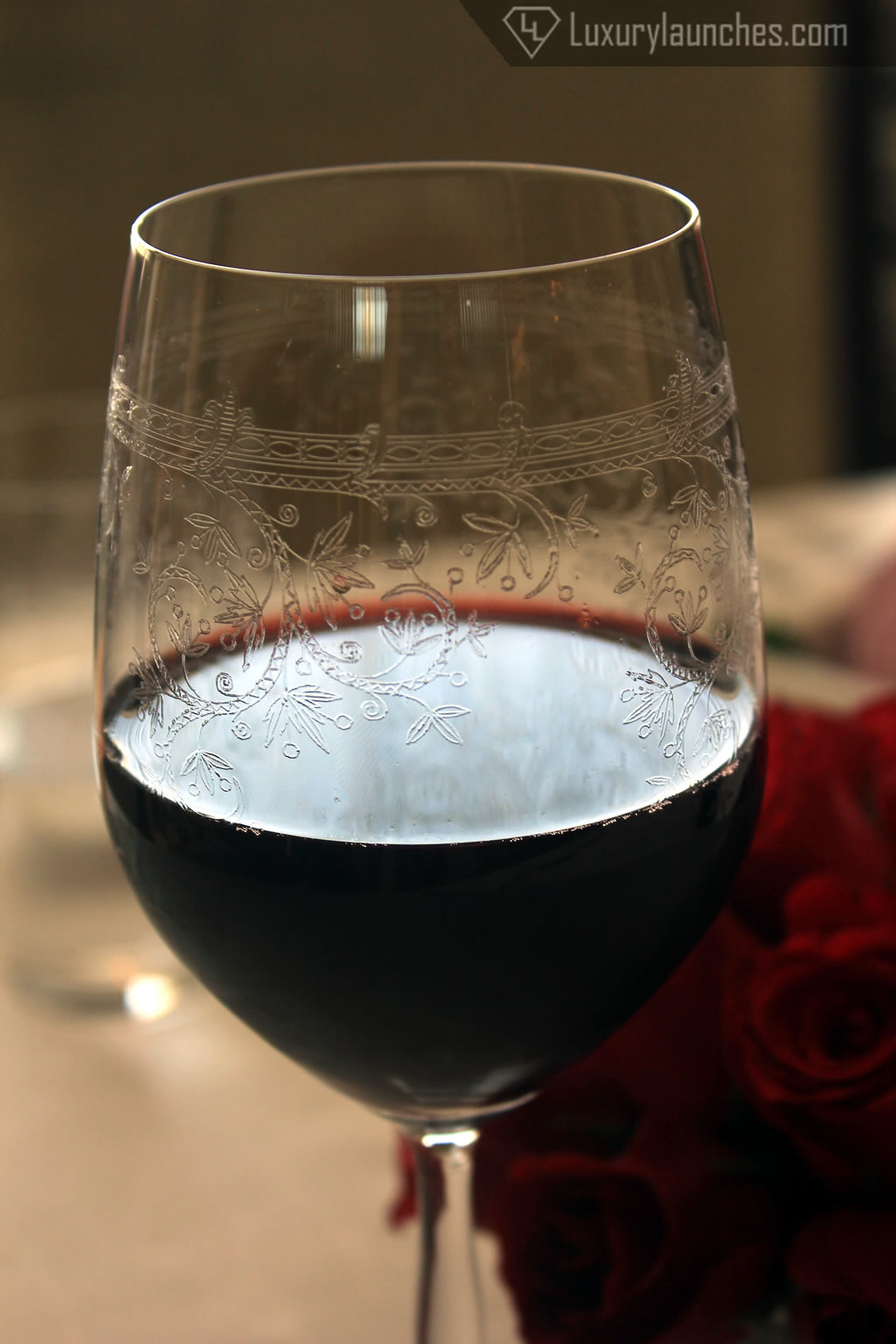Located on the 9M level of Palladium hotel is the foodie’s paradise Sahib Room and Kipling Bar. Inspired by the low-key glamour and refined opulence of Colonial India, the restaurant serves up our favourite kind of Indian food- richly flavoured and served with a smile. Our maiden visit to the Sahib Room had left us craving more so we were only too happy to try out their special Rampuri Menu which is available for a limited time. Suffice to say we were not disappointed in the least!
Ambience:
We’ve talked about the pretty interior design and the dedication to the colonial theme once before, so we’ll only say that the restaurant’s novelty has not worn off. We were still charmed by the old world aesthetic.
We visited at lunchtime, so our table was well illuminated by the large picture window. However, I am confident that dinnertime visitors would be treated to a more romantic set up thanks to the glittering lights of the city and a dimly lit interior.
Drinks:All the cocktails at the Kipling bar are created in-house but we decided to try out the two that were on offer as part of the Rampuri Menu. The Saufiyana was a blend of vodka, orange and (Rudyard Kipling’s favourite spice) fennel while Red Rocks was a chunky mix of watermelon, ginger, mint and rum inspired by Kipling’s description of the Red Fort. For me, the citrusy and unconventional Saufiyana stood out for it punchy aniseed flavour. Red Rocks is a safe pick for those for those who like to keep things simple. Both drinks have the fresh fruitiness that we crave in a summer cocktail.
All in all, the Kipling’s cocktails are intriguing and spicy, I look forward to trying the passion fruit and whisky infused Kim’s Game on my next visit.
An Indian Tempranillo wine made a light as air companion to our heavy Indian meal.
Food:
Chef Angad Rai who devised the menu was afraid that his masterpieces would blend into the sea of done-to-death Rampuri dishes in the Indian restaurant scene, so he hatched a plan to make his own recipes stand out through the clever use of out-of-the-box ingredients. On this menu, you’ll find raw jackfruit, banana flowers, apricots and wild figs each cooked in a way that you never thought of before.
We started with the two soups, Laung Subz Shorba (a creamy soup of vegetable stock thickened with rice) and Murg Chilgoza ka Shorma (velvety soup of shredded chicken and pine nuts with saffron). The former stood out for its subtly spicy flavour and soft rice grains. The murgh Shorba was a saffron tinged version of the chicken soup you know and love. It’s familiar but not memorable.
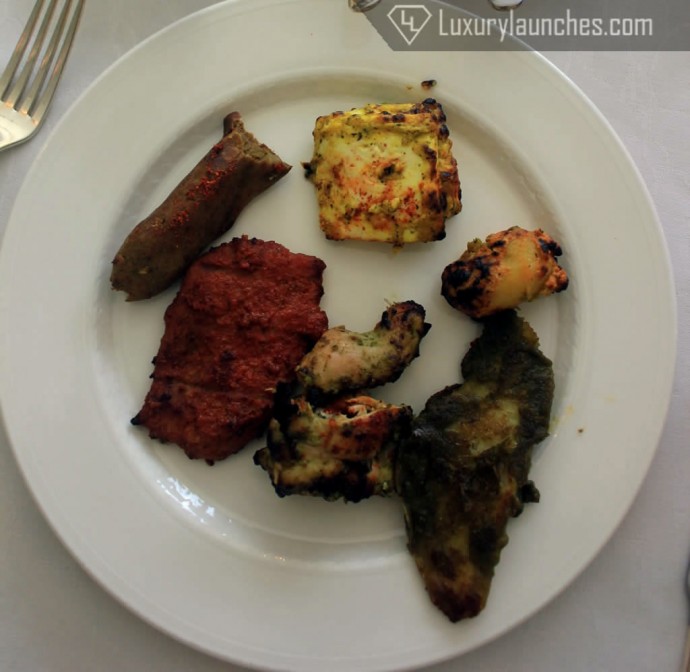


Haider Aloo. Centre: Subzani Murg:
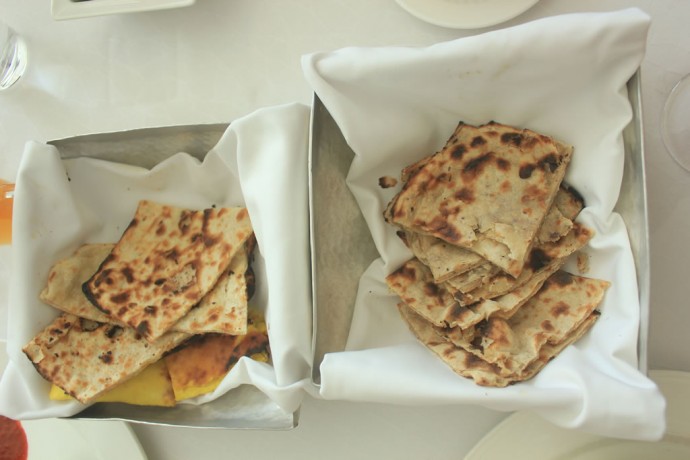


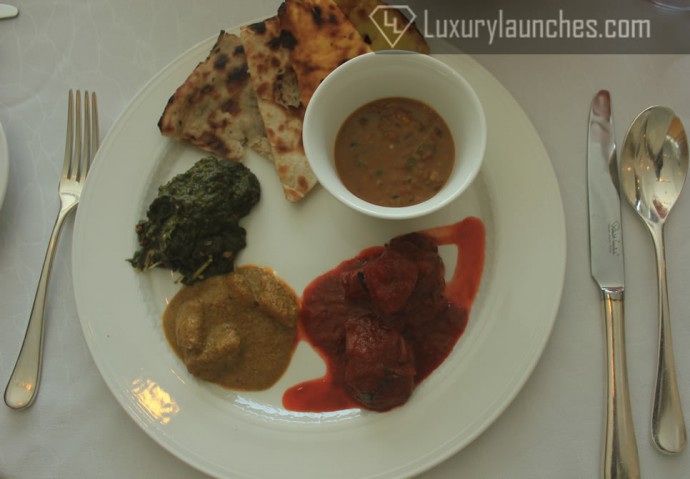


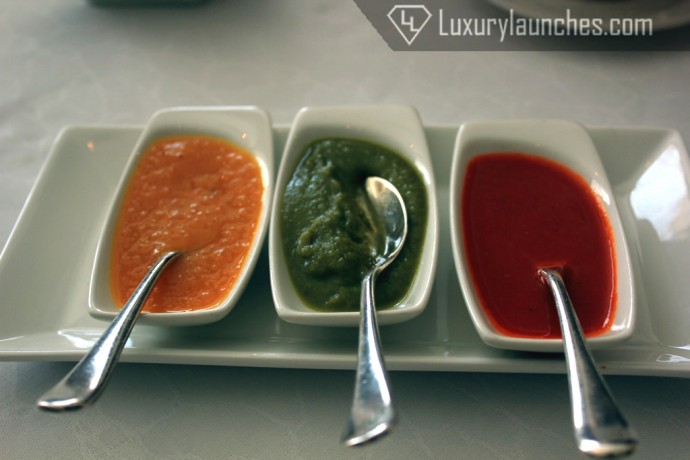


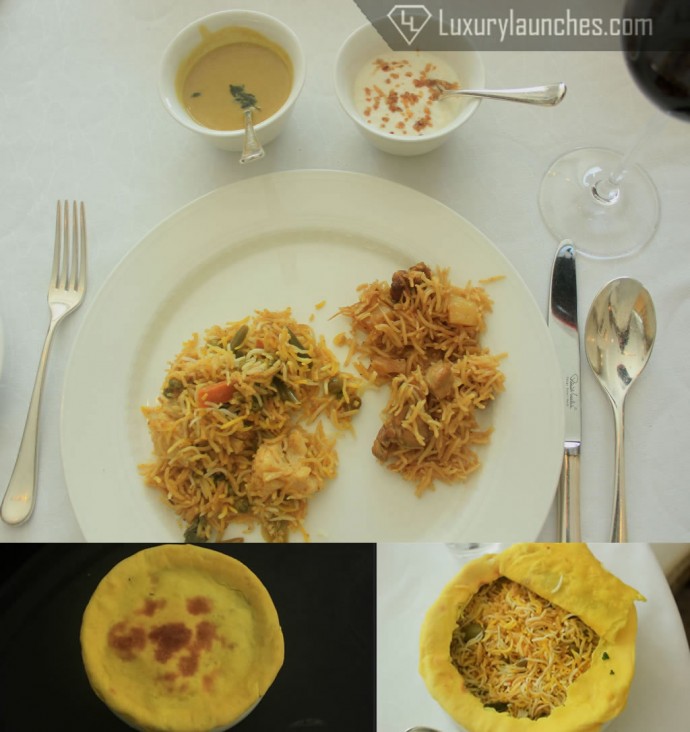


Accompaniments (L to R): Chicken broth gravy + Roasted garlic curd
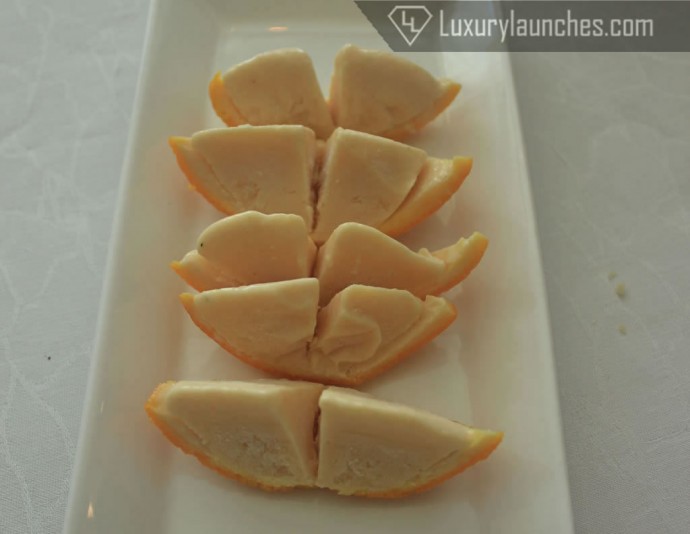


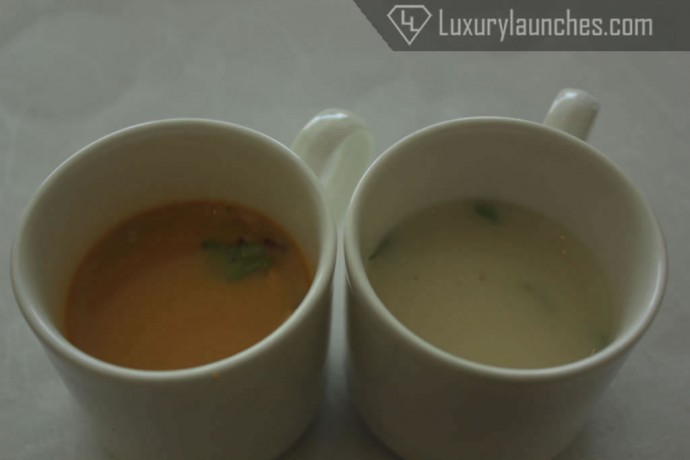


There are several dishes worth trying on this eclectic menu. Start with the Laung Subz Shorba which lacks richness but makes up for it with flavour in spades. Though hot soups are usually enjoyed in the winter, this one is light enough to work well even on a summer menu.
On the list of appetizers, don’t miss the Tassavur-e-paneer or the Tat ke Gosht. Both are reimagined classics that will remain in your mind long after you’ve concluded your meal. The Subzani Murg in third place is also a good bet.
Among the mains, the Nalli ka Korma is a must try. Tender meat and a thin spicy gravy make this dish a superstar on the menu. The Dal-e-Mumtaz is a close second. Not many will be keen to try out Dal at a high end restaurant, but this one is a creamy, spicy comfort and eating it feels like being rolled up in a warm blanket.
Verdict:
Our experience was made special by exceptional service. Our server was happy not only to break down the menu for us but also offer trivia about Rampur and the origins and history of the region’s cuisine. The food was exceptional and while we liked some dishes and disliked others, our takeaway was that every dish was unique both in concept and taste. Often at Indian restaurants (especially those that explore North Indian food) the flavours of one dish starts to blend into the next until they all taste identical, but food at the Sahib room does not suffer from this identity crisis.
The Rampuri menu is in keeping with the restaurant’s tradition of mixing classic dishes with modern elements and is a must try for those who love Indian food.
The Rampuri menu is on offer until March 29, so don’t miss it.
What We Ordered:
Saufiyana: Rs.600
Red Rocks: Rs.600
Kathal ke Seekh: Rs.750
Haider Aloo: Rs.650
Tassavur-e-paneer: Rs.650
Tat ke Gosht: Rs.850
Tawa Pomfret: Rs.1350
Subzani Murg: Rs.850
Rampuri Nalli ka Korma: Rs.1000
Amla ka Salan: Rs.750
Safri Murg: Rs.950
Dal-e-Mumtaz: Rs.650
Sheesh Subz Pulao: Rs.650
Murgh ki Tehri: Rs.950
Santra ki Kulfi: Rs.400
Shir Berenj: Rs.400
Address: Level 9M, 462,
Palladium Hotel, Senapati Bapat Marg,
Lower Parel, Mumbai 400013
Phone: 022 6162 8422
Images Courtesy: Erica D’Souza
Disclosure: The writer was hosted at the Sahib Room and Kipling Bar but all opinions expressed are her own.

